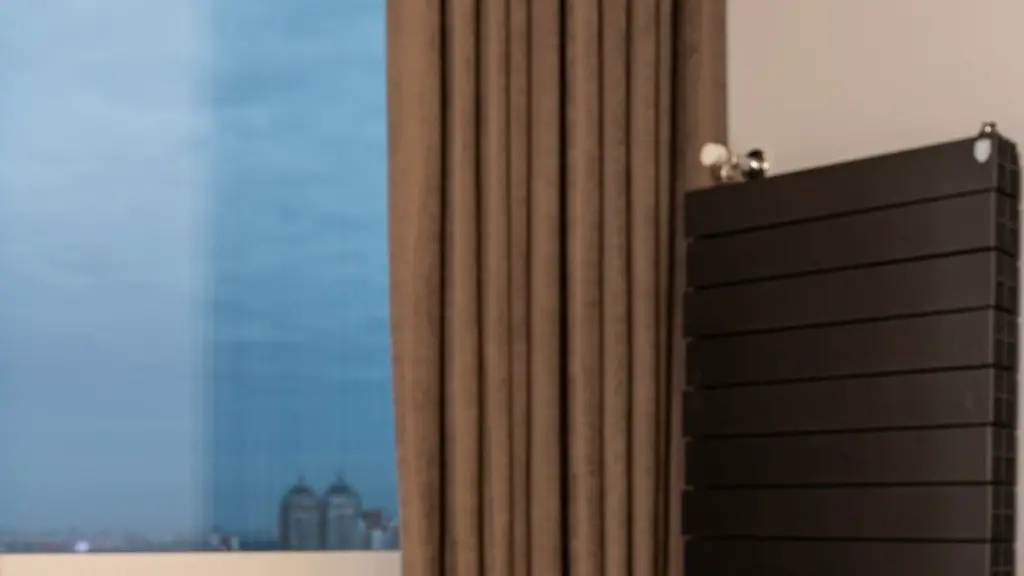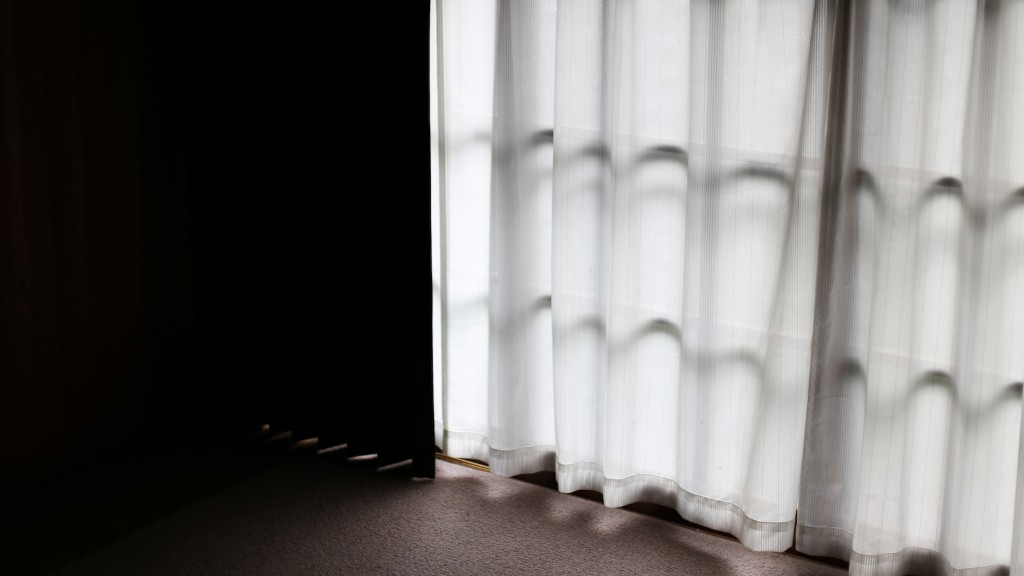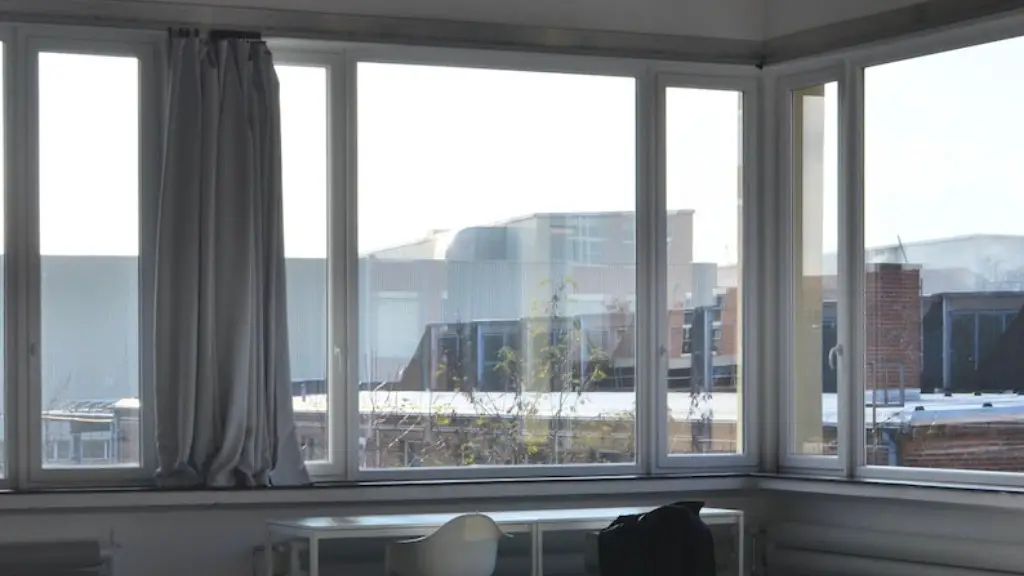There’s no definitive answer to how long curtains should be in a bedroom. It depends on the size and height of the window, as well as the overall style of the room. For example, if you have a small window, you might want to go with shorter curtains so they don’t overwhelm the space. If you have a large window or high ceilings, you might want to go with longer curtains to make a bolder statement. Ultimately, it’s up to you to decide what looks best in your bedroom.
There is no definitive answer to this question as it depends on personal preference and the overall style of the bedroom. However, as a general rule of thumb, curtains should be long enough to just graze the floor or puddle slightly on the floor for a more dramatic look.
What curtain length is best for bedroom?
If you’re looking for the best way to install curtains, it’s generally recommended that you choose panels that are 15-25 times the width of your windows. This will help the curtains maintain their folds and avoid appearing overstretched. Floor-length curtains tend to work well for family rooms, living rooms, and bedrooms, especially when the furniture is away from the walls.
What is the ideal curtain length?
Good length is just above the radiator or 10 cm below the sill, although you should make sure the radiator does not get too hot and that the curtains are not touching the radiator.
Should curtains touch the floor in a bedroom
There are a few things to consider when deciding if curtains should touch the floor. First, think about the overall style you are going for in the room. If you want a more formal look, then floor-length curtains are a good choice. If you’re going for a more relaxed vibe, then shorter curtains that don’t touch the floor may be a better option.
Another thing to think about is function. If you have pets or small children, you may want to choose curtains that don’t touch the floor so they don’t get dirty or damaged. If you live in a place with a lot of dust or pollen, floor-length curtains can help keep that out of your home.
Ultimately, it’s up to you to decide what looks and feels best in your home. There are no hard and fast rules when it comes to curtains, so go with what you think looks best.
When deciding on the length of your curtains, you’ll want to take into account the overall look you’re going for. If you want a more formal look, you’ll want your curtains to lightly brush the floor. However, if you’re going for a more relaxed look, you can have your curtains break anywhere from a ¼” to ½” from the floor.
Is it better to have curtains too long or too short?
If you want your curtains to look professional, you should follow the rule of thumb and opt for curtains that are at least 2-3 inches longer than your window. This will ensure that your curtains have a nice, full look that will complement your room.
Extra long curtains hung high above a window will create the illusion of more height and therefore more space within a small room. This is a great trick to use if you want to make a small room appear larger than it actually is.
What type of curtains are in style 2022?
If you’re looking for a way to update your home’s look without spending a lot of money, consider changing your curtains. In 2022, simplicity and minimalism are emerging in curtain and drapery styles. Less fluff and more flow are the way to go when choosing new curtains for your home. Classic materials like cotton and linen are top of the trend list to match the light, relaxing, naturalist themes this year.
It can be tricky to make sure your curtains hang at the right length. If your eye stops at the bottom of the curtain instead of extending all the way down to the floor, it can make the curtain, ceiling, and window look short. Try hanging the curtains a little higher than usual to give the illusion of a taller space.
Are bedroom curtains outdated
There has been a real resurgence in interest in draperies in recent years, and they can definitely still be used in modern homes. They can add a real sense of luxury and sophistication, particularly if you choose a luxurious fabric. They can also be a great way to add some warmth to a room, which can be particularly helpful in rooms with lots of hard surfaces.
Puddle draperies are the least functional of the three most common floor-to-ceiling styles. They are also the most high-maintenance. We recommend using them in rooms with less traffic, like formal dining rooms. But keep in mind that they are likely to collect dust and animal dander (if you have pets).
What length curtains touch the floor?
Curtains should ideally be floor-length in order to create a more elegant look. However, if there is a radiator or deep sill in the way, then they can be hung slightly above the floor. Ready-made panels are available in a range of lengths, so it is simply a matter of measuring from the floor to where the rod will be placed and rounding up to the nearest available size.
The decision of whether to let your drapes pool or puddle on the floor is a matter of personal preference and the function of the space. If you have small children or pets, you may not want to choose the puddling option, but if you’re using the room for formal entertaining, the extra drama and glamour might be worth it.
Is it OK to put long curtains on short windows
The way you hang your drapes can either make or break the look of your window. If you have a short window, it’s best to go with long drapes that hang down to the floor. This will give the illusion of a taller window and make the room look more proportional. Short drapes on a short window will only emphasize the small size of the window and make the room look smaller. So, if you want to make your short window look bigger, go with long drapes!
Curtains are a great way to add a touch of style and privacy to your home. When it comes to choosing the right length for your curtains, there are a few things to keep in mind. Interior designers typically recommend that the bottom of your curtains fall to the floor, but you can also let them “puddle” a bit if you prefer. If you don’t want your curtains to drag on the floor when you open and close them, be sure to stop them about an inch from the floor, but no more. With these tips in mind, you’re sure to find the perfect length for your space.
How far should curtains extend past window?
When considering the width of your window treatments, remember that drapes will usually be open during the day. Make sure the curtain rod extends at least four inches on each side of the window’s inside frame. To create the illusion of a wider window, extend the rod up to 10 inches beyond the window’s frame.
There are a few instances where it is perfectly acceptable not to use curtains in your design. When the view is too good to hide, when the bones are great on their own, when there is little natural light, in modern spaces, or if you can use a break from pattern are all examples of when you can ditch the curtains.
What Colour curtains are best for a bedroom
The color of your curtains can have a big impact on the overall feel of your bedroom. So, when choosing a color for your curtains, it’s important to consider what effect you want to create.
Light and sober colors like white, peach, and light blue are good choices for a relaxed and calming atmosphere. Rose pink can be a good choice for a bedroom of a couple, as it represents love. Dark red should be avoided in the bedroom, as it symbolizes anger.
If you’re worried about burglars, it’s best to leave your windows open during the day so it looks like someone is home. However, be sure to keep valuables out of sight so they’re not tempted to break in. Also, consider getting security lighting to deter any would-be thieves.
Warp Up
There is no definitive answer to this question as it depends on personal preference and the size and style of the bedroom. However, some experts recommend that curtains should be hung about 10-12 inches above the window frame and should extend to at least the middle of the window or beyond for a more luxurious look.
While there is no definitive answer, most experts recommend that curtains should reach the floor or be one inch above the floor. This allows them to provide the necessary privacy and light control while still allowing for easy cleaning.





